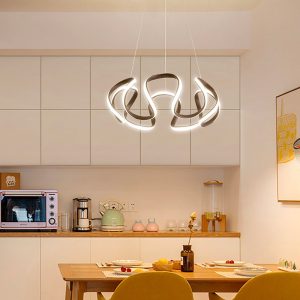Raising the Roof: The Allure of Ceiling Rooms
Introduction
Ceiling rooms have become increasingly popular in modern architecture, design, and home decor. These unique spaces, characterized by their high ceilings, provide a sense of grandeur, spaciousness, and luxury. From living rooms to bedrooms to commercial spaces, ceiling rooms can make a statement and enhance the aesthetic value of a property. In this article, we will explore the reasons why ceiling rooms have become so popular, their history, and their practical uses.
History of Ceiling Rooms
The concept of high-ceilinged rooms dates back to ancient civilizations such as Greece and Rome. These societies constructed buildings with high ceilings to provide better ventilation, as warm air rises to the ceiling and is replaced by cooler air from below. Additionally, higher ceilings allowed for natural light to penetrate deeper into the buildings, illuminating the interior spaces.
During the Renaissance period, ceiling rooms became a symbol of wealth and power. Italian palaces and villas featured high-ceilinged rooms adorned with intricate frescoes and murals, showcasing the wealth and status of the homeowners. This trend continued through the Baroque and Rococo periods, where ornate stucco work, chandeliers, and elaborate moldings were added to ceiling rooms for a more opulent look.
Why Ceiling Rooms are Popular
In modern times, ceiling rooms have become a desirable feature in homes, apartments, and commercial spaces for a multitude of reasons. One of the most obvious reasons is the sense of space that is created by the high ceiling. This works particularly well in smaller spaces, where a high ceiling creates an illusion of expansiveness.
Moreover, ceiling rooms provide opportunities for unique and stunning light fixtures that may not be possible with lower ceilings. Depending on how the ceiling is designed, there may be enough space for chandeliers, pendant lamps, or even skylights. Adding such lighting options can be a dramatic and elegant way to bring attention to a room.
Ceiling rooms also provide an ideal canvas for creative decor styles. The walls may be left bare, as the height of the ceiling alone packs a visual punch, or bold colors or patterns may be used to complement the dramatic feel of the space. The high ceiling can also be used as an opportunity to add vertical elements like tall planters or sculptures to draw attention upwards.
Practical Uses of Ceiling Rooms
Apart from the aesthetic appeal, ceiling rooms also have practical uses. For example, in commercial spaces like art galleries or museums, ceiling rooms may be used for displaying large works of art or installations. In homes, ceiling rooms may be the perfect spot for a home entertainment system or even a cozy loft area for relaxing or reading.
Another practical use of ceiling rooms is for acoustics. Musicians and performers often prefer to use spaces with high ceilings because the sound reverberations provide a richer and more natural sound. For this reason, churches, concert halls, and performance venues often have high ceilings.
Conclusion
Ceiling rooms serve both aesthetic and practical purposes, providing a versatile space that can be used for various activities. They are a striking feature that adds value to any property, from homes to commercial spaces. Whether designed minimally or extravagantly, their high ceilings create an air of opulence and grandeur that is impossible to ignore. With the continued evolution of architectural trends, it’s clear that ceiling rooms are here to stay, and their allure will only continue to grow.






